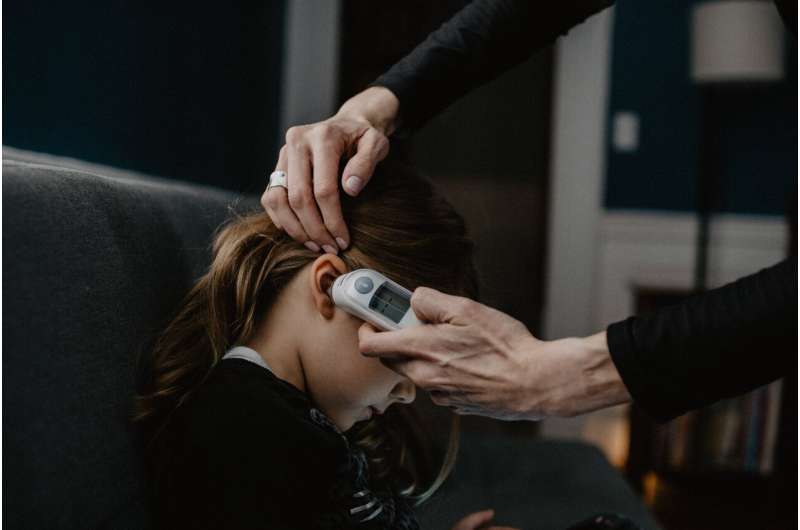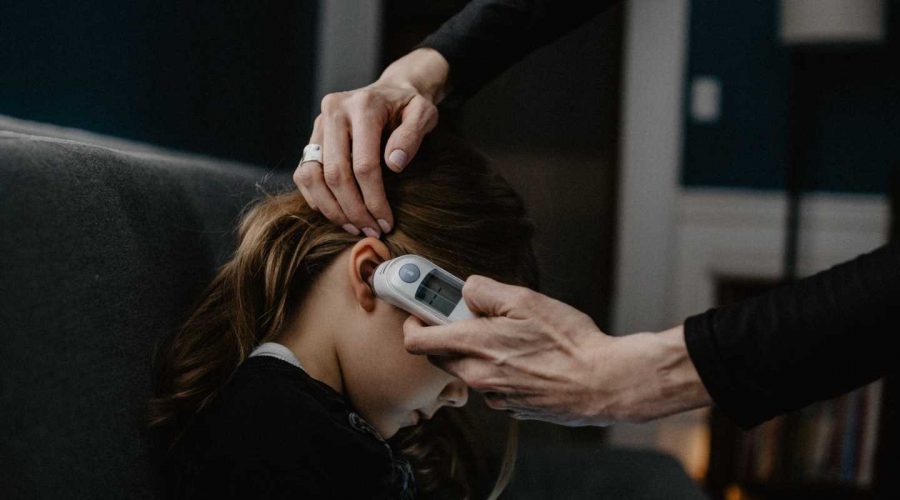How can I tell if my child has RSV?

With all the news about RSV surging in infants and toddlers, you may be wondering what to do if your kid gets a stuffy nose or fever this fall. You’re in good company—even parents who work as pediatric health care providers struggle sometimes.
“It’s hard as a parent to decipher your child’s symptoms because toddlers are often sniffling and coughing,” says Anne Geistkemper, MSc, RRT, a neonatal pediatric respiratory therapy manager at RUSH. Still, there’s no need to panic if you think your child might be getting sick.
Here, Geistkemper describes some symptoms of RSV, or respiratory syncytial virus, and when you should get medical help.
Symptoms of mild to moderate RSV
Fortunately, most kids who get RSV won’t require emergency care and will only have mild to moderate symptoms, Geistkemper says. Mild cases of RSV may cause symptoms such as:
- A stuffy nose with mucus
- Coughing
- A mild or moderate fever (lower than 100.4 degrees Fahrenheit for infants younger than 3 months or lower than 102 degrees Fahrenheit for older kids)
- Irritability or fussiness
- Fatigue
- Lack of appetite
Kids with moderate cases of RSV may also have some trouble breathing. Some signs to watch for include:
- Neck muscles “tugging” or straining
- Flaring nostrils, often with rapid breathing
- Belly breathing
- Struggling for air (you may see your child’s ribs as they inhale)
Don’t feel like you need to handle your child’s breathing problems on your own, Geistkemper says.
“If you are concerned and your child doesn’t have life-threatening symptoms, call your pediatrician or go to an immediate care clinic. You could even do a virtual visit so the doctor could see how your child is breathing and determine if you might need more support to manage your child’s symptoms,” she says.
Caring for a child with RSV at home
Most kids with RSV can be treated at home, with the same type of remedies you would offer to ease a cold, Geistkemper says. She recommends these tips for parents:
- Keep your child hydrated with clear liquids, which helps thin mucus so it can escape the airways. Popsicles or Pedialyte are great options.
- Use nasal saline drops and/or a nasal aspirator to remove mucus from your little one’s nose, especially if they are too young to blow their nose.
- Create a “steam room” in your bathroom by running a hot shower with the door closed. As your child breathes in the steam, it helps clear stuffy nasal passages and airways.
- Ease a fever with Tylenol or Motrin, as directed by your medical team.
Be on the lookout for worsening symptoms, which may require a visit to your doctor, immediate care clinic or emergency department.
Signs you should seek emergency care
In some infants and young children, RSV can cause dangerous inflammation in the airways within the lungs. Geistkemper says children with serious and potentially life-threatening cases of RSV may have these symptoms:
- Skin, lips or fingernails that turn gray or bluish in color
- Sudden decrease in alertness or activity level
- Sustained high fever (higher than 100.4 degrees Fahrenheit for infants younger than 3 months or higher than 102 degrees Fahrenheit for older children) not resolving with over-the-counter medications
If your child has these symptoms, seek emergency care.
For kids who require hospitalization
At RUSH, Geistkemper and other members of the respiratory therapy team have been working hard since RSV cases began to rise in September. “In October, we provided three times the amount of respiratory therapy modalities we gave in July,” Geistkemper says.
One treatment offered in the hospital is high-flow oxygen therapy. “It’s a noninvasive way to support kids’ breathing so they’re not struggling as much,” she says. Another therapy is noninvasive ventilation, which can help children breathe without requiring a breathing tube. For kids with severe RSV, ventilators may be used to help them breathe easier.
Respiratory therapists: Always prepared
Although it’s unclear how long this current RSV surge will last, Geistkemper says the COVID-19 pandemic prepared respiratory therapists at RUSH for surges in other respiratory diseases like RSV. Part of this preparation involves cross-training all respiratory therapists to work on both the pediatric and adult care units, so they can collaborate to provide care where it is most needed.
Source: Read Full Article
